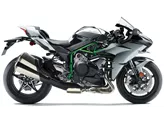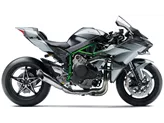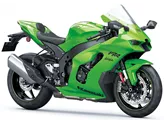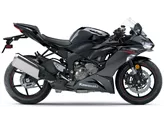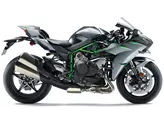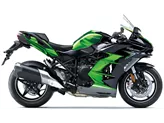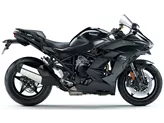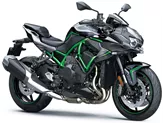Kawasaki Ninja H2 2015 vs. Kawasaki Ninja ZX-10R 2021

Kawasaki Ninja H2 2015
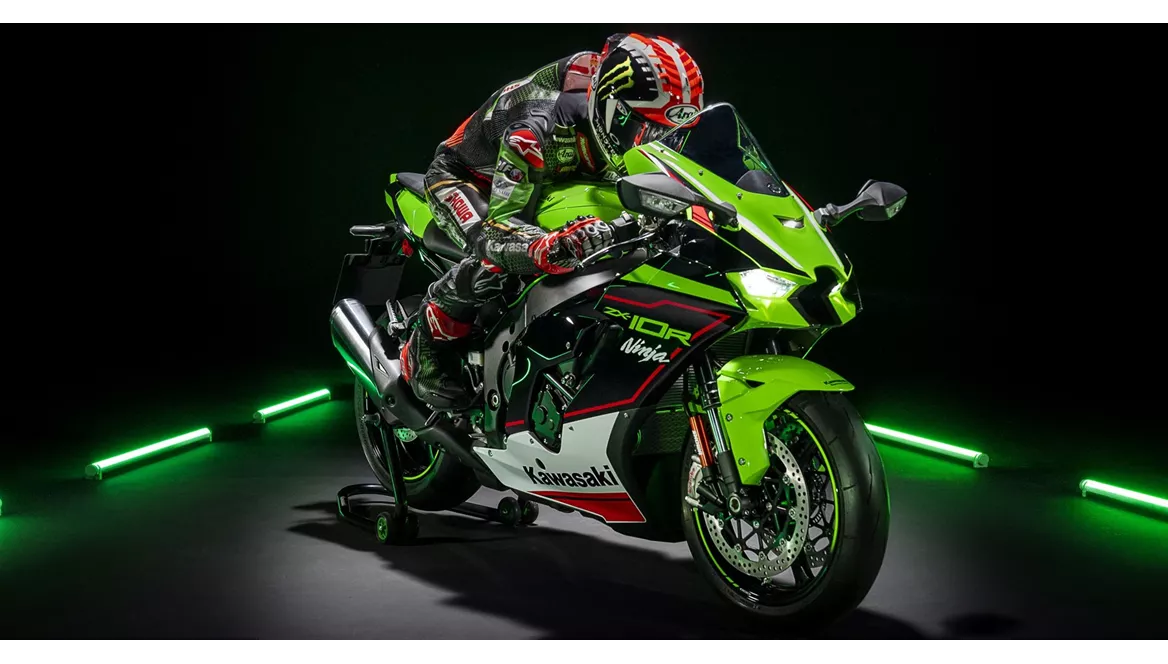
Kawasaki Ninja ZX-10R 2021
Overview - Kawasaki Ninja H2 2015 vs Kawasaki Ninja ZX-10R 2021
The Kawasaki Ninja H2 model year 2015 and the Kawasaki Ninja ZX-10R model year 2021 are both high-performance supersport motorcycles from Kawasaki. While they share some similarities in terms of engine specifications and design, there are also notable differences between the two models.
In terms of engine and drive train, both motorcycles have an inline four-cylinder engine with a bore of 76 mm and a stroke of 55 mm. However, there are differences in their power output and torque. The Ninja H2 2015 has an engine power of 200 HP and torque of 133.5 Nm, while the Ninja ZX-10R 2021 has a slightly higher engine power of 203 HP but lower torque of 114.9 Nm. The compression ratio of the Ninja H2 is 8.5, while the Ninja ZX-10R has a higher compression ratio of 13. Both motorcycles have four valves per cylinder and utilize DOHC technology.
In terms of suspension, the Ninja H2 2015 features a telescopic fork front suspension with compression, preload, and rebound adjustment, while the Ninja ZX-10R 2021 has an upside-down telescopic fork front suspension with the same adjustment options. The rear suspension of the Ninja H2 is a single swing arm with compression, preload, and rebound adjustment, while the Ninja ZX-10R has a swing arm rear suspension with the same adjustment options.
In terms of chassis, the Ninja H2 2015 has a steel frame, while the Ninja ZX-10R 2021 features an aluminum frame. This difference in frame material may contribute to variations in weight and handling characteristics between the two models.

Kawasaki Ninja H2 2015
Both motorcycles have double disk front brakes, but the Ninja ZX-10R 2021 also incorporates petal technology for improved braking performance. The front tire width is the same for both models at 120 mm, but the rear tire width differs slightly, with the Ninja H2 having a width of 200 mm and the Ninja ZX-10R having a width of 190 mm. Both motorcycles have a 17-inch front and rear tire diameter.
In terms of dimensions and weights, the Ninja H2 2015 has a wheelbase of 1455 mm and a seat height of 825 mm, while the Ninja ZX-10R 2021 has a slightly shorter wheelbase of 1440 mm and a slightly higher seat height of 835 mm. Both motorcycles have a fuel tank capacity of 17 liters.
Now let's compare the strengths and weaknesses of each model. The Ninja H2 2015 is praised for its outstanding build quality, fascinating engine with a mechanical turbocharger, and exceptional pull, acceleration, and speed. The narrow seat ensures safe standing, even for smaller riders, and the motorcycle offers great stability and inspires confidence despite its high performance. The strong brakes and high-quality details are also notable strengths.
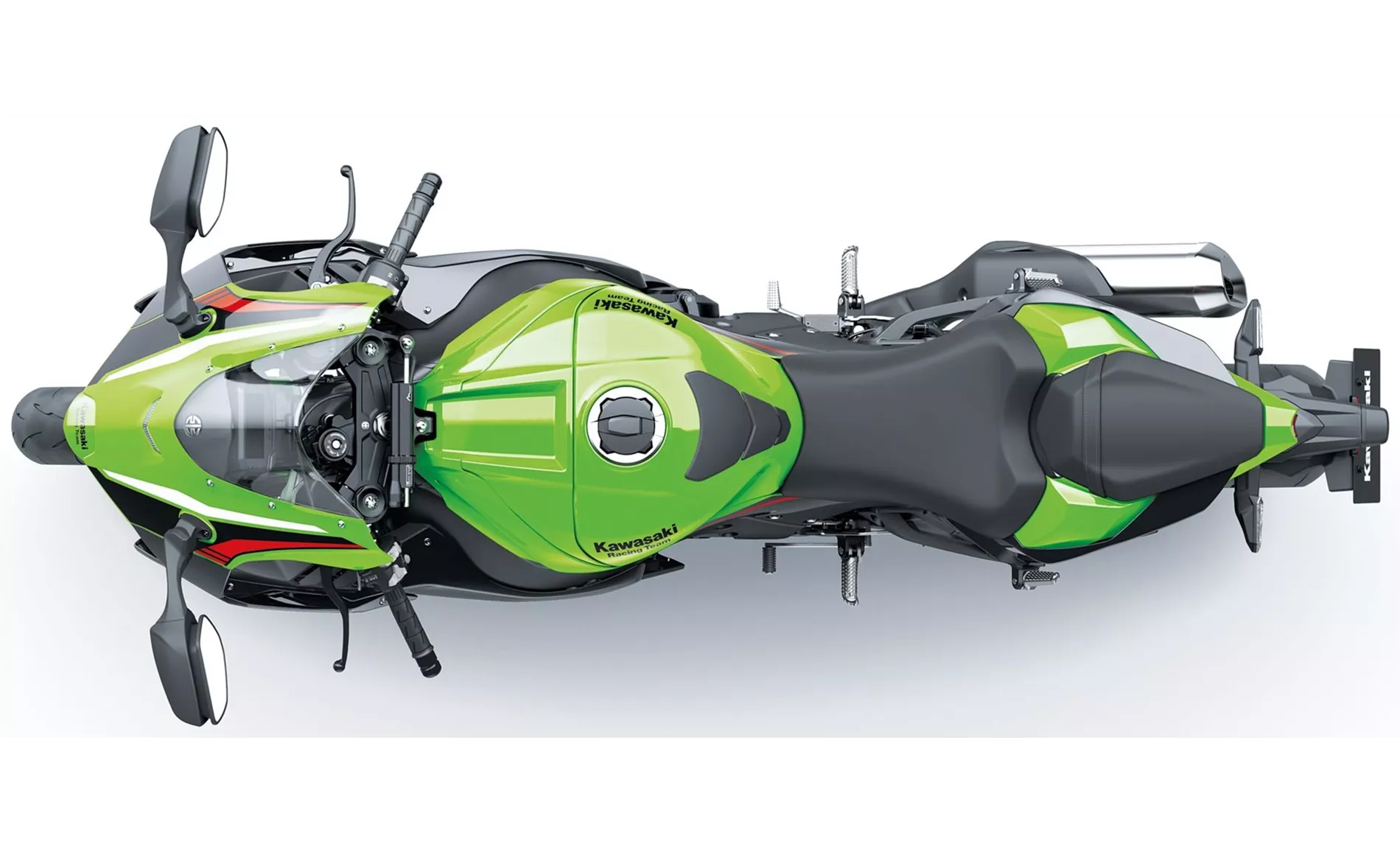
Kawasaki Ninja ZX-10R 2021
On the other hand, the Ninja H2 2015 has some weaknesses, including response behavior in the transition from pushing mode to acceleration phase not being at the level of "normal" motorcycles and understeer in fast bends. Additionally, riders with a body height of 185 cm or taller may find it difficult to integrate their feet into the overall aerodynamic concept.
Moving on to the Ninja ZX-10R 2021, its strengths include high-quality workmanship, strong components, a high-revving and powerful engine, great wind protection with good aerodynamics, and a comfortable seating position even for tall riders. The motorcycle also boasts a high-quality electronics package, powerful brakes, and a well-balanced chassis.
However, the Ninja ZX-10R 2021 does have some weaknesses, including load change reactions in the partial load range, a somewhat slow quickshifter, and a relatively small display.
In summary, the Kawasaki Ninja H2 2015 and the Kawasaki Ninja ZX-10R 2021 are both impressive supersport motorcycles with their own strengths and weaknesses. The Ninja H2 offers exceptional performance and build quality, while the Ninja ZX-10R provides high-quality components and a comfortable riding experience. Ultimately, the choice between the two models will depend on the rider's preferences and priorities.
Technical Specifications Kawasaki Ninja H2 2015 compared to Kawasaki Ninja ZX-10R 2021
Pros and Cons in comparison
Pros and Cons in comparison
Kawasaki Ninja H2 2015

The Ninja H2 represents a milestone in motorbike history. It is not only packed with electronic innovations, but also offers completely new technologies in terms of engine construction and mechanics. This high-tech research object of a Japanese technology company is actually for sale and can also be ridden. Basically, it rides like a normal motorbike, only with considerably more power. At first, the engine response is a challenge, but speed freaks will find a way to ride and enjoy this fascinating motorbike.
Kawasaki Ninja ZX-10R 2021
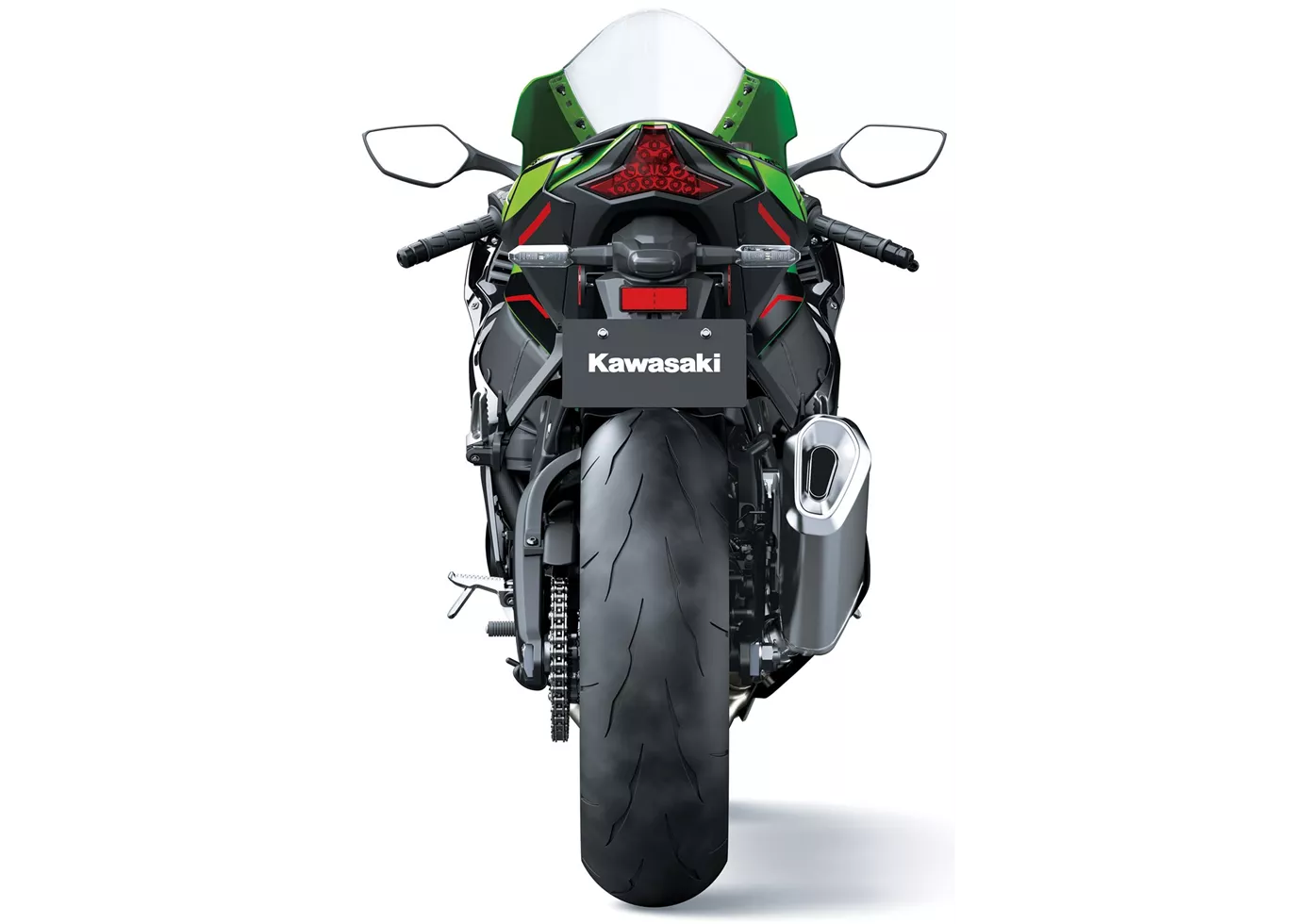
Kawasaki offers a mature overall package with the Ninja ZX-10R in the 2021 model year, which with the new front end also really looks like 2021. The bike offers surprisingly good space for the rider and you feel comfortable in the saddle. The rev-happy engine leaves nothing to be desired - except perhaps more discipline in the part-load range. To make the project a success, Kawasaki relies on high-quality ingredients: Showa suspension, Öhlins steering dampers, Brembo brakes with 330 discs and high-quality electronics. Thanks to the good electronics and the superior engine, the Ninja ZX-10R even cuts quite a figure on country roads - as long as you are willing to suffer a little in terms of seating position due to the concept.
Price Comparison Avarage Market Price Kawasaki Ninja H2 vs Kawasaki Ninja ZX-10R
There are a few key differences between a Kawasaki Ninja H2 2015 and a Kawasaki Ninja ZX-10R 2021. There are the same number of bikes of both models available on the 1000PS.de marketplace, specifically 4. It takes less time to sell a Kawasaki Ninja H2 with 153 days compared to 177 days for a Kawasaki Ninja ZX-10R. Since model year 2015 1000PS.de editors have written 27 reviews for the Kawasaki Ninja H2 and 51 reviews for the Kawasaki Ninja ZX-10R since model year 2005. The first review for the Kawasaki Ninja H2 was published on 8/31/2014 and now has more than 5,600 views. This compares to more than 2,900 views for the first review on Kawasaki Ninja ZX-10R published on 1/11/2004.





